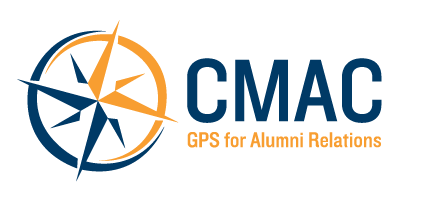The Key to Institutional Respect? Measuring Alumni Engagement
One of the central questions that’s frequently top of mind for alumni pros is, “How do we get people, particularly colleagues in development but also the academic community on campus, to respect and acknowledge the work we do?” There’s often considerable skepticism about the impact of alumni engagement on campus. As my colleague Nicole Hess Kempton pointed out in her recent article, the alumni team is sometimes considered “the party planners.”
Most people reading this article would undoubtedly agree that the party planner characterization isn’t fair or accurate. However, it’s hard to prove otherwise without proper metrics and reporting.
Four core roadblocks stand in the way of having the type of alumni engagement metrics reporting that will showcase ROI.
Disparate systems - For most schools, engagement data is scattered throughout event and email platforms, social media, various Google forms and surveys, career services CRMs like Handshake, and the advancement CRM of record. Engagement data can be hard to wrangle.
Data organization - Often, data has been coded and categorized differently over various eras making it tough, if not seemingly impossible to organize. Also, when different administrators are “in charge” of this data across units and program teams, this creates confusion and then no one ultimately responsible for all of it as a whole.
Talent - The reality is that organizing engagement data, producing attractive dashboards showcasing alumni activity, and assigning dynamic engagement scores all require an experienced data science professional. For those schools fortunate enough to have someone who fits the bill, they’re often focused on giving reports, and engagement is a back-burner item. This person will be expensive and probably demand a salary equivalent to an AVP-level position.
Time - It’s also true that alumni teams are often stuck at the tactical level, moving from one program to the next without adequately organizing and storing engagement data. Even when an effort is made to manage this data and then bring people to the table to discuss how to make engagement data useful for cultivation and qualification, people are stuck in their habits and often fail to utilize the reporting properly.
Here’s the thing… if alumni teams are going to showcase their value, this work isn’t optional. It's a must. For those alumni leaders who invest in engagement metrics and reporting, there are many opportunities to use the data to improve overall operations, all while showcasing the incredible value of the work. Here are just a few of them:
Selecting the best alumni for volunteer boards.
With metrics and scoring, alumni teams can advise their volunteer leaders on candidates with a history of engagement and for whom the opportunity to serve reflects a culminating engagement experience. For many alumni teams, the honest answer to the question, “How do I get to be on the Alumni Board?” is either a) you have to know someone, or b) it’s a popularity contest. With alumni engagement metrics and scores, alumni leaders can create a culture that puts a value on a history of engagement first and puts other factors like demographics second.
Empower academic deans and faculty.
An investment in metrics means not only showcasing the large swath of graduates and friends that the central alumni team has engaged but it empowers academic leaders to be part of the team. Engagement scores allow alumni teams to produce “Top 100 lists” of individuals that college deans and department chairs can reach out to independently.
Alumni leaders don’t want or need to be their institution's gatekeeper and soul-harbinger of engagement. Activating alumni is everyone’s responsibility. Proper metrics and reporting bring this to life. Once alumni leaders can begin reporting on the data they already have, more flows in from campus partners who want their efforts to be included too.
Segmenting volunteer opportunities.
In my last piece, I wrote about how important it is for alumni leaders under the advancement umbrella to be part of an integrated team. A crucial tenet of being part of an integrated advancement model is to focus on scaling volunteerism. Moving lightly engaged individuals who are only involved with communications into lightweight volunteer opportunities, for example, is an excellent way to produce value and ROI for the entire advancement operations. It showcases a donor pipeline development strategy.
Final point: To move beyond the “party planner” stereotype, alumni teams must invest in engagement metrics and reporting. Effective use of engagement data helps identify top volunteer candidates, empowers academic leaders, and strengthens institutional connections. More importantly, it positions alumni teams as strategic partners rather than event facilitators. Institutions that embrace this shift and make the investment will see stronger alumni relationships and more significant long-term support.
Now for some log rolling: Our team at CMAC, led by Melissa Schipke, has developed a new practice area for alumni engagement metrics and reporting. We can provide this valuable service without the investment in an AVP-level position and produce the dashboards, scoring, and reporting that virtually all advancement leaders have been dreaming about.
Ryan Catherwood serves as Executive Vice President and Senior Consultant at Chris Marshall Advancement Consulting (CMAC), consulting partner with Washburn & McGoldrick LLC, and co-host of the Alumless and Alumless World web series and podcasts.








